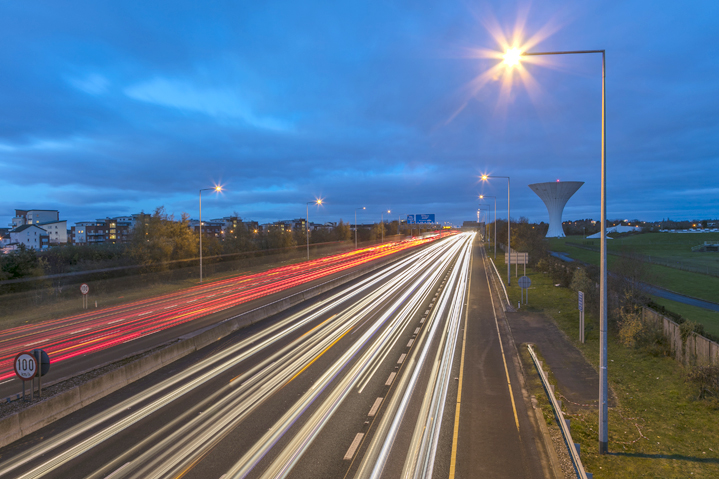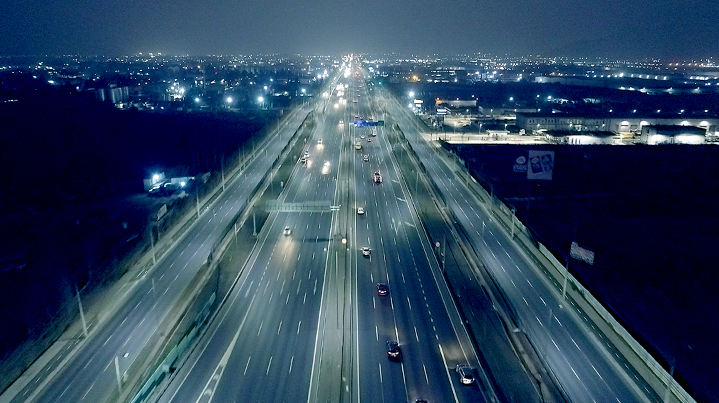Global leader in transport infrastructure management, Globalvia is firmly committed to innovation as the driving force behind change to transform society. The company fosters new mobility models to enhance the evolution of road and rail transport, and undertakes projects of enormous innovation value in Spain, United States, Ireland, Portugal, Andorra, Mexico, Costa Rica and Chile.
Globalvia is aware of the changing paradigm the infrastructure and transport sectors are currently going through. Technological disruption and new mobility models set out a scenario teeming with opportunities, but also challenges and risks.
The keys to transformation
Is this sector ready to meet these changes? This transformation, which has already taken place in different industries such as banking and telecommunications, is driven by users themselves. Transport users are increasingly demanding services centred around a unique, differentiating travel experience. Construction companies, transport operators, administrations, technology manufacturers, all of us pursue a common goal: to offer a safe, integrated, user-oriented urban and interurban transport system through efficient management. What are the key levers to achieve such a vital transformation in our industry?
Joining forces
1. Working cooperatively and uniting efforts. We have come a long way from the times when innovation was carried out individually, exclusively using one’s own resources. Competitors, different stakeholders, private or public companies, all of us must work together and join forces to establish working standards and integrate best multi-sectoral practices in order to allow us to deploy new technologies.
In this sense for example, the major role of infrastructure as a key item to facilitate the incorporation of autonomous cars in our lives must be tackled from a multi-sectoral point of view. A joint effort is required in order to agree to patterns and action protocols for critical moments when cars and transport infrastructure have to be connected thus ensuring safe decisions are made for passengers, pedestrians and perhaps other robots in the vicinity.
Technology as a competitive advantage
2. Starting to see things from the user’s perspective. In that sense starting to question our value chain with the fundamentals and lessons learnt in other sectors is vital. If digital natives have revolutionised the user experience by incorporating facilities just one click away, how can we replicate that or how can we interact with our customers and cater to their needs using data?
3. Using technology as a lever for transformation and a competitive advantage. The slogan at CES 2019 “Every Company Is a Tech Company” highlights a reality that many companies are still finding it hard to take on board. Not only technology should allow us to automate processes through technologies that are currently available on the market, such as drones, mixed reality techniques, robots in processes or the use of machine learning for problem solving. Digital disruption, which other sectors have been applying for many years, such as in the logistics industry, will undoubtedly push us forward to develop new ways of operating and maintaining our infrastructures.

M50 Concession Limited, Globalvia’s concession in Ireland, has developed an innovative energy saving project in the motorway lighting system.
Talent
4. Transformation is not possible with people’s talent. Consequently, we are responsible for creating working environments that encourage creativity, ideas and an explosion of talent. These working environments, based on trust, make us a desirable company. All the above is combined with an array of talent and profiles, from the scientific world to the humanist world.
Innovation in Globalvia
It is increasingly more obvious that we are not living in an era of change, but rather that we are immersed in a change of era, which implies a particularly deep transformation in the way we work and provide our services to citizens. At Globalvia we are ready to rise to this challenge, and to do so, from inside the company, we are preparing to have an impact outside our organisation. We have a clear view of how innovation should improve society. We analyse new challenges to provide imaginative solutions and opportunities for our business. We have defined three axes for our outlook on innovation:
- Innovate to improve society. Transforming transport infrastructures towards new mobility models in which people are placed at the centre.
- Innovate to transform business. Employing disruptive technologies to be more efficient in our operations and provide our users with a differentiating experience.
- Innovate to empower employees. Embracing a culture of innovation that enhances intra-entrepreneurialism and creativity.

Santiago Lampa Highway, Globalvia’s Chilean Concession, is the result of a transformation project to an urban standard and implementation of Free-Flow tolls in order to provide a higher quality, safer infrastructure, and one that is more convenient whilst also saving travelling time.
In order to implement our outlook on innovation we are committed to Open Innovation to encourage innovation for society, business and employees. Our Open Innovation model seeks to identify and define ideas, products and services that contribute to new approaches, new business models and a differentiating value for our infrastructures and for society. These ideas must have a positive impact on Globalvia’s challenges, its users and the infrastructures we manage.
We know this transformation cannot be achieved just by waving a magic wand, but rather that it is a path, a change of direction where innovation must be the driving force behind ideas that mobilise society. Globalvia has already set out on the road to transformation, heading up different types of projects that are so necessary for change, and which are encompassed in the following subjects:
- Providing a unique, differentiating experience for our users while they travel.
- Creating new mobility models that change our lifestyle.
- Facilitating life surrounding us through data interconnection.
- Being a benchmark in smart, safe infrastructures.
- Fostering sustainable, long-lasting models.
Planning for Sustainable Mobility
Defining policies related to sustainable mobility is fundamental to specify the goals that mobility management must aim for, considering that it should not only be at local level, or in most cases, at regional level, but at national level and in line with European initiatives.
At Globalvia we firmly believe that public / private cooperation is something that will allow improving the options that administrations are able to offer their citizens in terms of mobility when applying these policies. Building Park & Ride car parks, creating new transport lines or managing public areas or infrastructures, while guaranteeing optimum standards in terms of quality and safety, are some examples that an infrastructure operator such as Globalvia is able to offer society.
Globalvia is one of the leading infrastructure managers in the transport sector, with concessions in eight countries and a long-term outlook with the aim of promoting progress in terms of sustainable mobility everywhere we operate.
